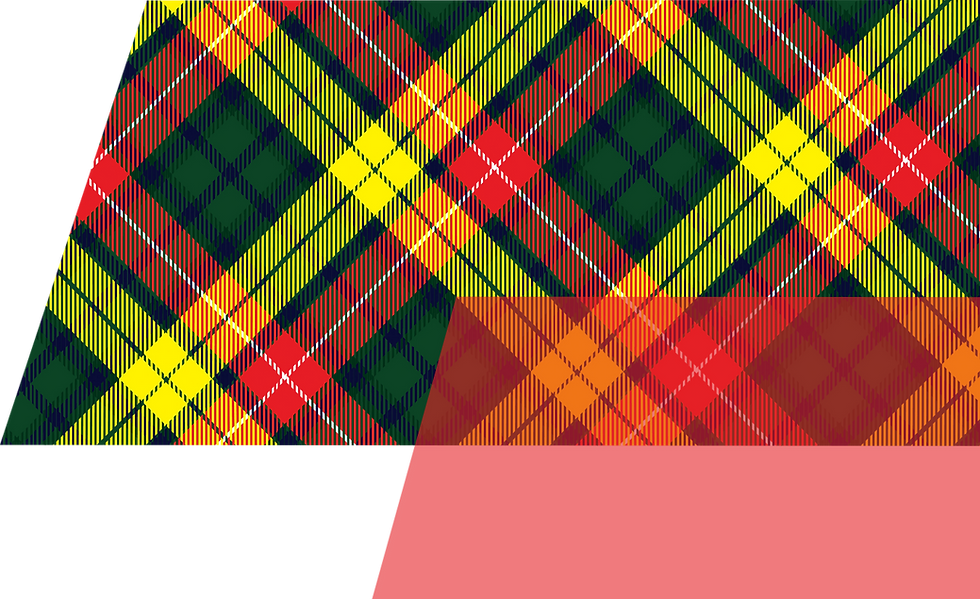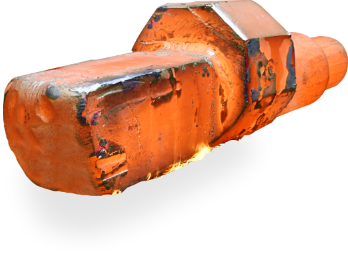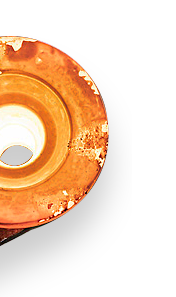
HYDROPOWER & TURBINE FORGINGS
.jpg)
Rethinking Historic Design to Keep Your Energy Flowing
With more than 52% of the nation’s renewable energy coming from hydroelectric facilities, we understand the critical nature of your projects. At Scot Forge, our Power Generation team is well-versed in the technical specifications of hydropower forging designs for large-scale projects. From wicket gates to turbine shaft components, we manufacture cutting-edge solutions to fix your most complex repairs.
Our team works with one-off projects such as supplying forgings for maintenance on the Hoover Dam or repeat projects, which allows you to get ahead by scheduling your forgings to arrive when you need them, enhancing your supply chain. At Scot Forge, we look to be more than just a manufacturer; we want to be a partner in keeping your energy flowing.
Forged Parts For Hydropower Generation
Forged Shafts – Turbine shaft components, generator rotors, wicket gate shafts, guide bearings
Forged Complex Shapes – Wicket gates, gate components, bolts, thrust runners
Forged Hollows – Bearing sleeves, packing sleeves
Forged Rings – Wear rings, break rings, collars
Forged Discs – Circular discs for runner applications

Hydropower Applications
Different Types of Hydropower Facilities
Conventional dams are not the only source of hydroelectric power generation; from pumped storage facilities to run-of-river sites, there are various ways to harness hydropower. With each application comes its own set of benefits and electrical output capabilities.
-
Dams/Impoundment:
Impoundment facilities, most often referred to as dams, generate energy by releasing water from an upper reservoir. The water flows through a turbine that activates and spins a generator, which produces electricity. These facilities are not solely dependent on the natural flow of water, and the larger the reservoir is, the more storage that can be provided for future energy generation. Because of this, impoundments can flexibly generate energy that meets both baseload and peak load energy demands.
-
Pumped Storage:
Pumped storage acts as a battery by moving water between two reservoirs. Water is pumped through penstocks from a lower reservoir to a higher one, which stores energy, and is then released back from the upper reservoir through turbines to generate electricity when there is demand. These facilities can compensate for demand-driven fluctuations and are an efficient form of bulk energy storage.
-
Run-of-River/Diversion:
Diversions, often called run-of-river facilities, channel water through a canal or penstock using river water’s natural flow. Because these facilities are reliant on the constraint of incoming water movement, the electrical output varies.
Hydroelectric Turbines
Whether you’re working with impulse or reaction turbines, both play a critical role in keeping your hydropower facility running efficiently.
Impulse
-
Pelton Turbine
Pelton turbines are impulse-type turbines that use the pressure of water to move the turbine. Peltons are very efficient and rely on a drive wheel with buckets that catch water and transfer its energy to the generator. Our forgings for turbine components are used in applications such as the drive wheel, also called the runner, to provide quality and reliability where it matters most. So, whether it be an unforeseen emergency or a scheduled H-mod, you can count on us to follow through and deliver for all your hydropower needs.
Reaction
-
Kaplan Turbine
The Kaplan turbine is one of the more widely used turbines in the hydropower energy industry. Because of the axial flow principle, Kaplan turbines work more efficiently at low water head and high flow rates than other turbine types. As a result, these turbines are ideal for well-ordered electricity production. However, while it is one of the most modern turbines, it can come with a hefty price tag to install and maintain because of the moving parts. This is why choosing a suitable material is critical for turbine longevity. Stainless steel grades help protect against cavitation and corrosion, providing your dam with quality forgings that will last and require fewer weld repairs.
-
Francis Turbine
Francis turbines, found in medium to large-scale hydropower facilities, mix reaction and impulse turbines. As the blades turn, they utilize both the reaction and flow of water to create power more effectively. Francis turbines are designed and assembled for a broad scope of heads and flows, making them the most commonly used hydroelectric turbine. Our technically trained team, from sales, engineering, production and testing, is experienced in developing forgings for Francis turbines, including shaft, drive wheel and guide bearing forgings.
Reasons To Choose Scot Forge
Quality Assurance/Accreditations
With a successful track record of providing the highest quality forging solutions for your most complex challenges, we combine strength and precision via best-in-class technologies and practices to deliver the most reliable forgings in the hydroelectric industry. Every order we process, product we forge and quality test we conduct, our goal is simple, to exceed customer expectations in every way possible.
Dedicated Technical Expertise
Backed by our metallurgists, forging experts and decades of experience manufacturing turbine components, our technically trained account managers are here to help you. By partnering with your team to get ahead of scheduled maintenance or improving the historic design of turbines in your hydroelectric facility, we understand the importance of providing solutions that will withstand the test of time.
Fast Delivery and Breakdown Services
At Scot Forge, we know the significance of staying on schedule and delivering components true to form. Timely forging solutions that meet customer specifications in high-performance applications is our highest priority. Buying a forging that will meet all specifications for end-use applications is critical. As a reliable supplier, we offer expedited shipping for breakdowns and crisis orders needing desperate attention in dire conditions.
A Vast Inventory of Materials
We stock more than 75 million pounds of raw material in-house at our facilities, including corrosion- and cavitation-resistant materials commonly used in hydropower applications, such as Nitronic 50 and stainless-steel alloys. Our readily available inventory eliminates delays associated with order processing and accelerates the timeline of your project.
Flexible sizes, shapes and quantities
No matter the grade of material or shape and size of the part, our facilities are designed to support both single-piece and high-volume manufacturing.
Questions? Contact a Forging Expert

Scot Forge Difference
At Scot Forge, we know the importance of getting your parts on-time, as expected. However, for customers new to procuring forgings, ordering a forging that will meet all specifications for end-use applications may be a challenge, which is why finding a trusted supplier and partner is essential. Our employee-owners are here to ensure your project stays on track with our forgings by offering:
We offer many size forgings in both standard and unique geometries to meet your needs.
Pro Tip - Did you know near-net shapes can save you time and money? Oftentimes, a customer calls to order a disc, which they will later machine down to a more shaped part. By working with our technically trained sales team, you can get your finished product shape as close as possible to optimize your production process.





